The New Gastronome
Boza
The Probiotic Goodness
by Nil Erdoğan
by Nil Erdoğan
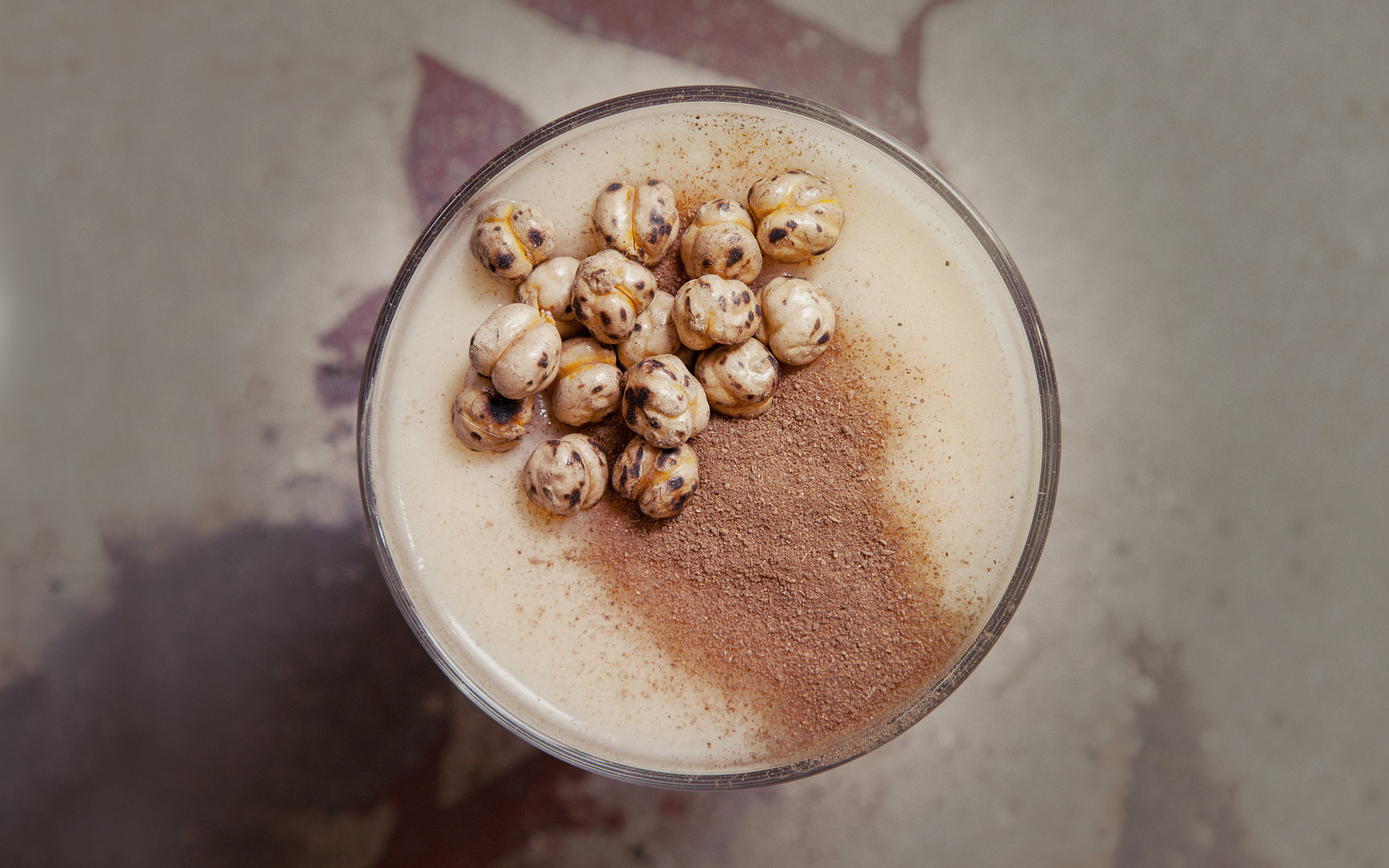
I was born and raised in Istanbul. I had the chance to witness many beautiful sides of this city and lived my childhood to the fullest. You should hear what our grandparents have to say about this wonderful place but as time passed and many migrations from villages and different cities occurred, the dynamics of the city naturally changed a lot. Although the sense of belonging to Istanbul gradually decreased, every now and then the slightest details still allow me to hold on to my love of this city. It makes me happy to see that some things never change. One of them is boza, it lets me embrace and taste a piece of history!
In our country boza is usually made from white millet. Apart from millet, it can also be made from grains such as wheat, barley, rice, bulgur, rye, oat and corn. The grain is boiled, which allows the populations of yeast and lactic acid bacteria to rise. The lactic acid bacteria, in turn, use enzymes to start a fermentation process. Yeast, which consumes simple sugar, meanwhile creates carbon dioxide gas. As fermentation prolongs, sugar decreases and acetic acid forms. Acetic acid gives the boza its sour taste and so, finally, we obtain a fermented beverage. In fact, with its thick consistency and satisfying properties, boza is not only considered a beverage but also a kind of food. We can even think of it as one of the first food forms in the world.
According to historians, the origin of boza goes back 9000 years. It travelled from Mesopotamia to the Caucasus and further to Anatolia with Turkish migrations and found its way to the Balkans from there. In some sources, it is said that the word boza comes from the word “buze”, which means millet in Persian. However, in the translation of Asım Efendi’s Burhan-ı Katı (the Turkish-Persian dictionary), the Persian “buze” was not used for millet, but for a drink made from rice and millet flour. Others say that in one of the old Turkish dialects, Çağatay language, it co-originated with the word “buksum”, meaning sour drink made from millet. For this reason, there is a possibility that the word boza likely passed from Turkish to Persian.
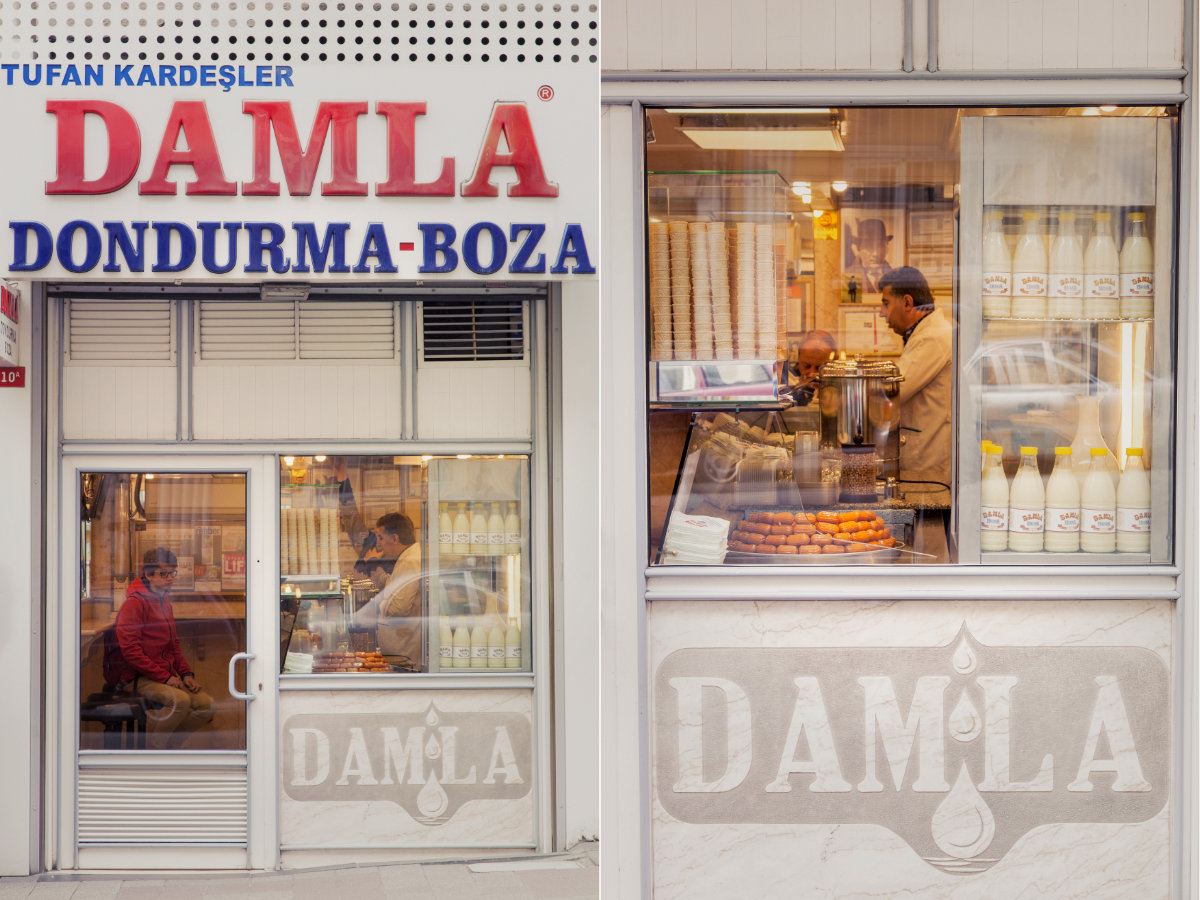
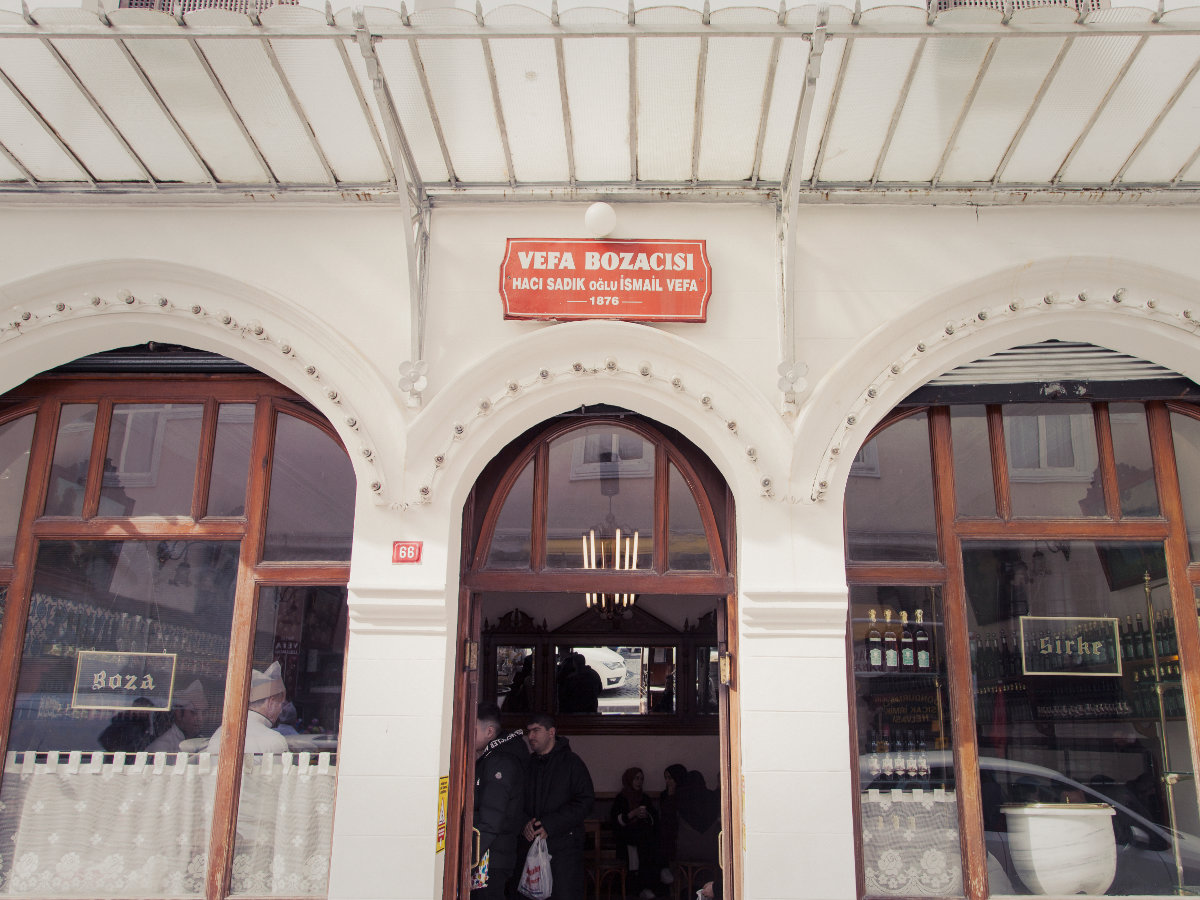
The beverage itself was probably found by chance. People crushed the grain, mixed it with water and set aside this slurry to eat. Then, the mixture spontaneously fermented in the high temperatures. The result had a pleasant taste and people liked it. During the Seljuks period, it was produced from millet and barley and kept in jugs for maturation. At that time, boza was called “bekti”. Various types of it were made in Istanbul during the 11th century. Yellow boza, boza with jasmine and other very strong fragrances was made for ulemas and sheikhs. In fact, molasses, cinnamon, cloves, ginger and coconut were often added to it.
“In fact, with its thick consistency and satisfying properties, boza is not only considered a beverage but also a kind of food. We can even think of it as one of the first food forms in the world.”
A. D. V. E. R. T. I. S. I. N. G.
Boza experienced its golden age during the Ottoman period. There were boza houses in almost every neighbourhood and it was even said to be one of Fatih Sultan Mehmet’s favourite drinks. During the II. Selim period (1524 – 1574), it was banned for a while, because in some boza houses, it was rested for a few months in order to be turned into alcohol. In the 17th century, IV. Sultan Mehmed (1648-1687) banned alcoholic beverages, including boza, and closed all boza shops. This ban returned many times during the history of the Ottoman Empire, but permissions were always given for its remaking. Evliya Çelebi mentions in his Seyahatname (a travel book, written in the 17th century by the Ottoman Turkish traveller): ‘’In the 17th century, in Anatolia, there were around 300 boza houses in Istanbul. It was consumed to a great extent, not only by the public but also by the military, especially the Janissaries. Because of its low alcohol level, it was considered warming and strengthening for soldiers.’’ His travel book further explains: “In the army, those who made boza were quite many. Drinking boza enough to cause drunkenness was a sin, but unlike wine, it was not a crime if it was taken in small quantities.” Until the 19th century, the sour-tasting beverage, which can be considered an alcoholic beverage due to that sourness, was consumed. Over time it was replaced by the sweeter and non-alcoholic version of boza.
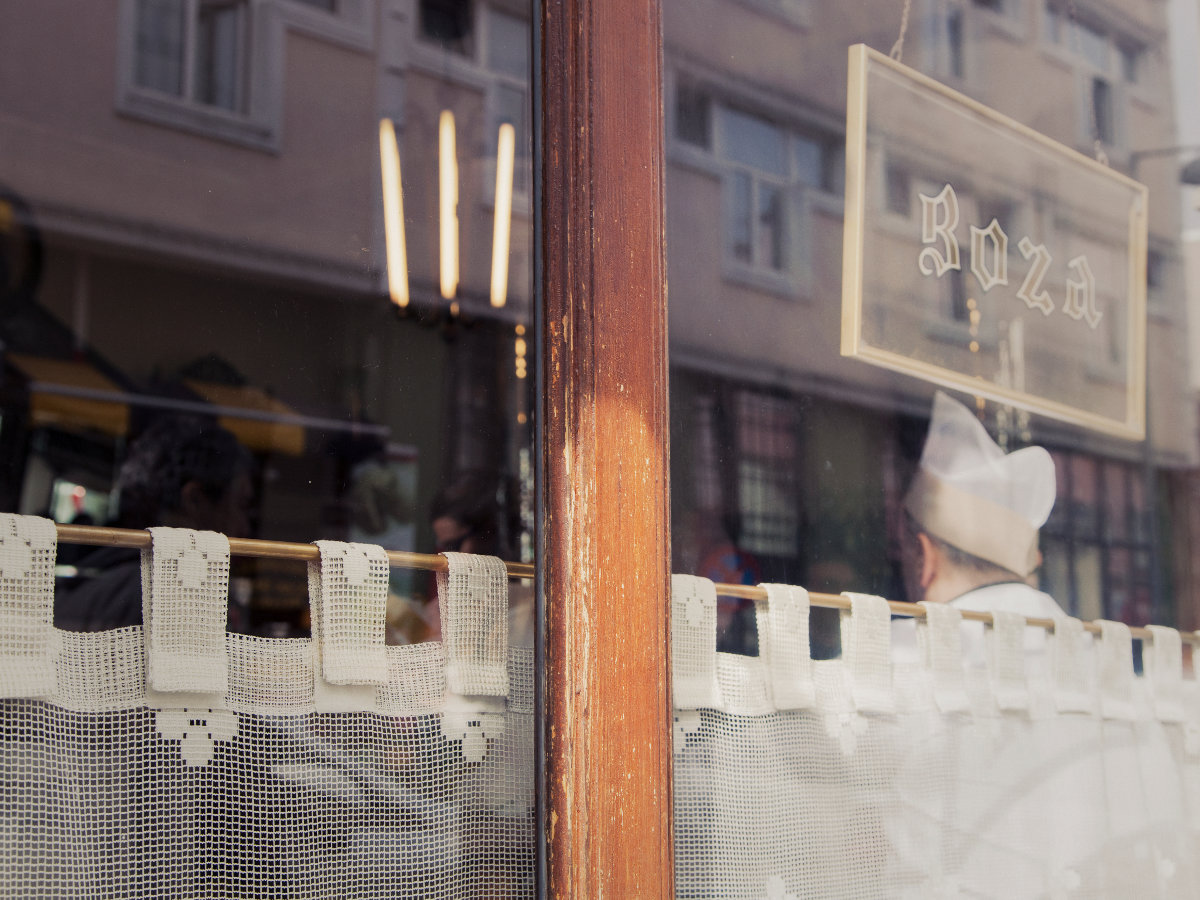
Hacı Sadık Bey came to Istanbul from Albania in the 1870s. In those years, he saw that boza was made and sold by up to 200 local artisans, with a juicy consistency, brown colour and sour taste. He decided to try a different method and created the current version of boza. The very slight sour taste, dark consistency and light yellow colour were the first signature signs of his brand. He introduced his boza, which he produced under his house for six years, by distributing it in and around the palace. Thanks to the increasing demand, Vefa – which is one of the most distinguished districts of Istanbul – opened the first official trading house for boza in the world in September 1876. Starting with Hacı Sadık Bey and continuing with the fourth generation of his family members, boza production still continues to preserve Turkish standards and traditional taste.
A. D. V. E. R. T. I. S. I. N. G.
If you ever visit Istanbul, another beautiful place to take a sip of boza is Damla in Kurtuluş. This tiny shop was founded by two brothers and has been operating since 1989. They sell ice cream in the summer and boza in the winter. Boza here is in great demand for its flavour. It is one of the places that sell boza with a sweet taste, which is acquired by it not being fermented as long during the production. Therefore, the place is preferred by those who don’t like the sour taste in their boza. I also observed that in some places, flour was added to the boza production alongside grain. For example, when I read the ingredients of the boza made in Damla, I saw that it contains some wheat flour, which makes it not gluten-free. In other sources, I read that rice flour or roasted chickpea flour was added to the boza. The addition of roasted chickpea flour increases the amount of protein and minerals, while at the same time allowing it to be consumed by sufferers of celiac disease.
“Boza is a beverage that can be consumed during any season, but it is generally appreciated more during winter […] Boza is also a probiotic drink that strengthens the immune system and gives energy during cold winter days.”
Boza is a beverage that can be consumed during any season, but it is generally appreciated more during winter. The reason for this is actually based in old times. It’s known that in winter, people had difficulties finding food and transportation in rural areas, because of the weather conditions. So, women used to make something out of the grains that were already in the house. And you guessed it, boza was one of those recipes. It was easy to obtain, economic and satisfying. Boza is also a probiotic drink that strengthens the immune system and gives energy during cold winter days. Drinking it in reasonable amounts has no side effects but if it is consumed excessively, it can cause digestive disorders such as gas, bulginess or diarrhoea. To balance the little amount of sugar present in boza, as well as its slightly sour taste, it is usually served with roasted yellow chickpeas (in Turkish it’s called sarı leblebi) and ground cinnamon.
As boza changes at high temperatures with the rapid growth of yeast and acetic acid bacteria, storing it at +4ºC extends its shelf life up to 1-2 weeks. After that, the product begins to acidify and becomes unusable. The shelf life of boza, when produced using any probiotic starter can be up to 12 days at +4ºC. Boza that has not been fermented enough can be stored at +4ºC for 10 days.
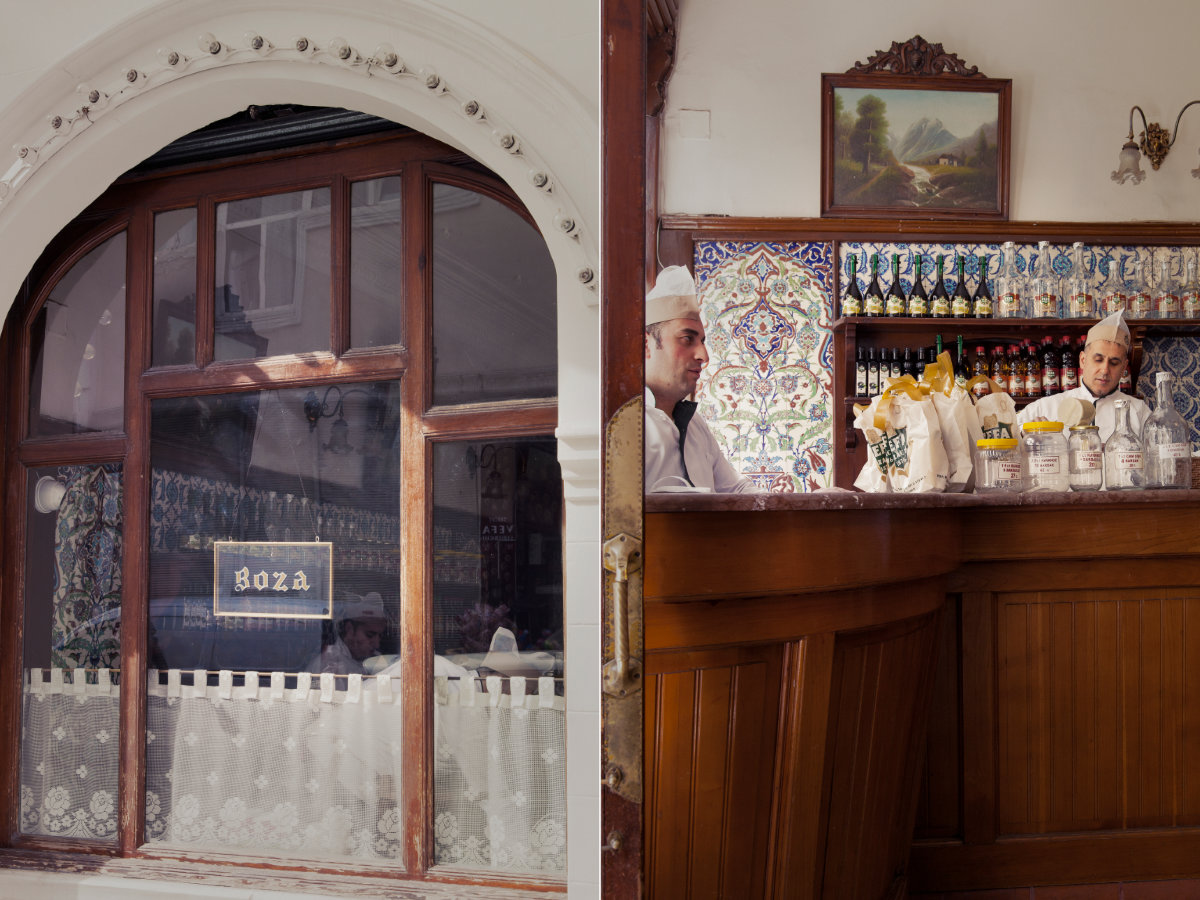
According to today’s Turkish Standards Institute, the rate of alcohol in sweet or sour boza must not be higher than 2%. In the studies conducted, it was determined that the rate of alcohol in boza produced in our country is very low (less than 0.6%) or absent. Among other things, like the ingredients used and the method of production, the alcohol content is the difference between boza that is produced in our country and the one produced in other countries. Except for Turkey, you can also find boza in Kosovo, Bulgaria, Macedonia, Albania, Bosnia and Herzegovina, Montenegro, Serbia, Romania, Kazakhstan and Kyrgyzstan.
I remember the famous Turkish writer Orhan Pamuk’s “A Strangeness in My Head” novel that tells the story of a boza maker, Mevlut. He comes to Istanbul from his village and starts doing this profession, which he learned from his father. He walks around the streets and sells boza at night. Sometimes he gets invited to his customer’s houses to keep them company. There really used to be such street boza makers. On cold winter days, these people would walk from door to door with copper vessels (in Turkish called “güğüm”) while shouting “booo-zaaaa, goood boo-zaaaa” and sell it to craving customers. I remember from my childhood the sounds of street boza makers. They still exist in some cities and districts, but with the advent of modern techniques, the growth of commerce and the extension of boza’s expiration dates in grocery stores, their numbers have gradually decreased. In Pamuk’s novel, we both witness the life of a boza maker and the things that happened around him, namely the evolution of Istanbul. After reading this novel, we can say that it is not only a drink but also a lifestyle that provides long and strong conversations.
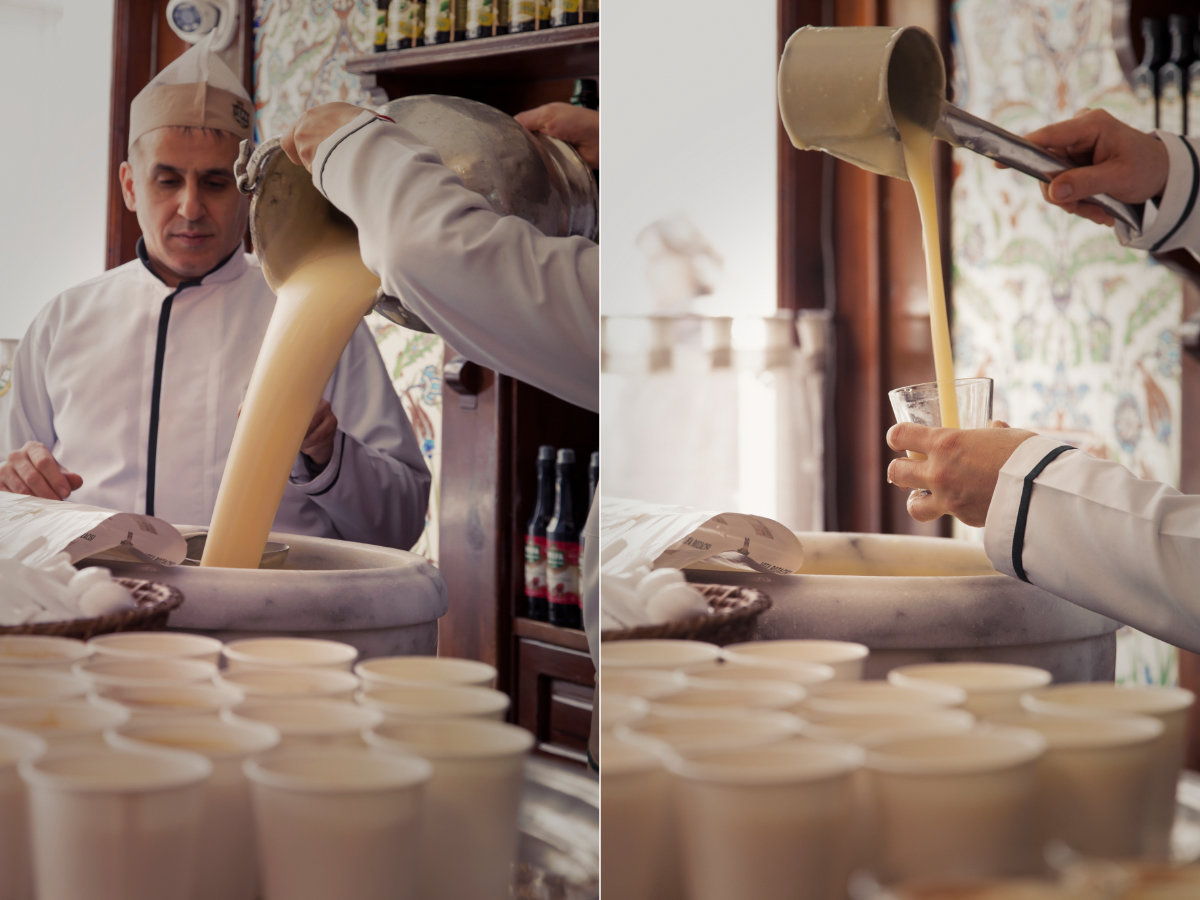
Now, I would like to share a recipe for this natural and fermented product with you. I personally tried it at home and it tastes great!
Boza
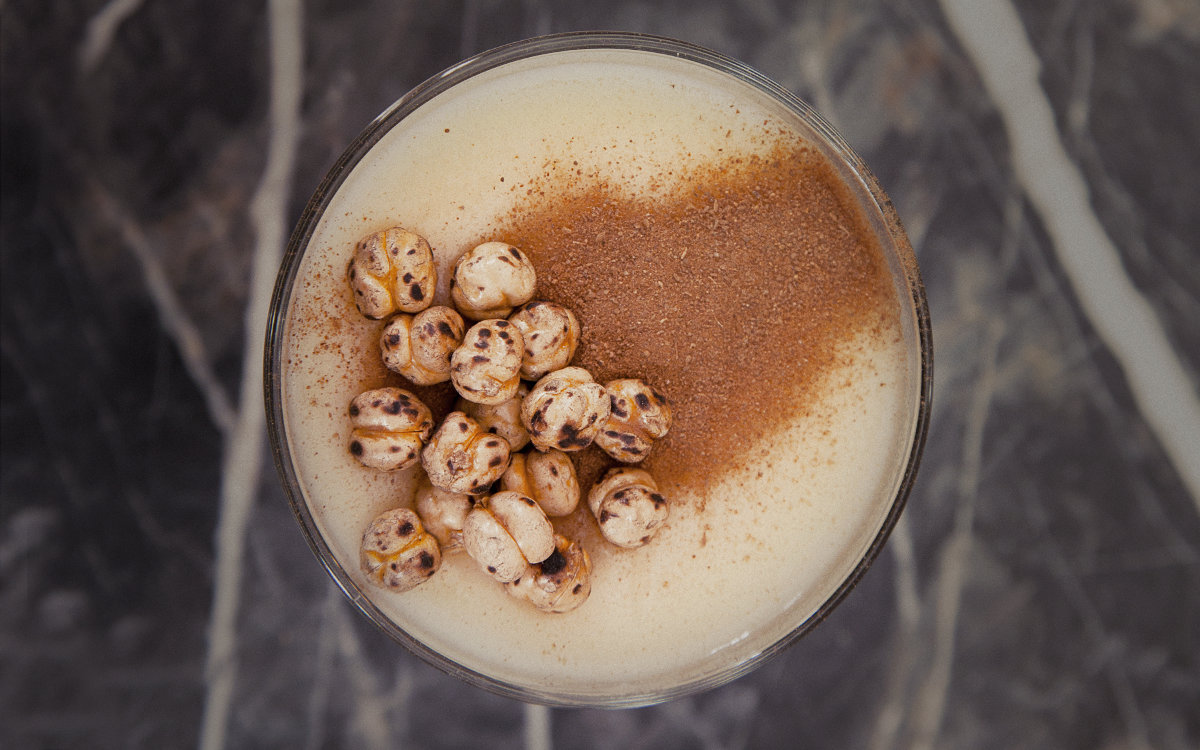
Feel free to adjust the ratio of sourness and sweetness to your taste. If you want a sweeter drink, you can keep the fermentation process short. You can also add wheat flour according to your preference. Finally, if you want a whiter colour, use rice instead of millet.